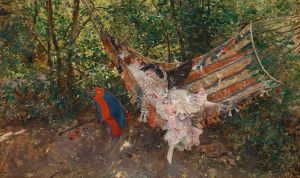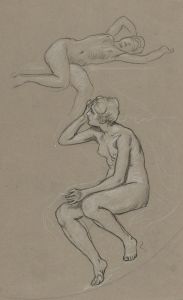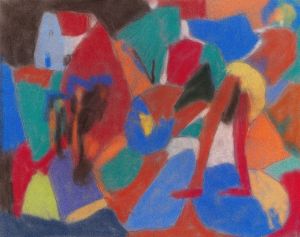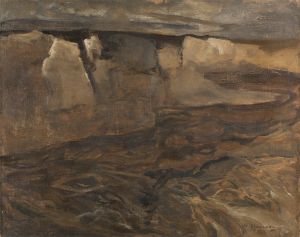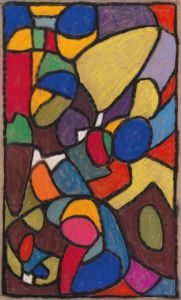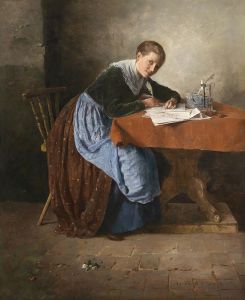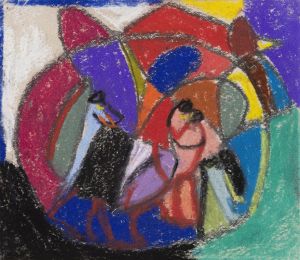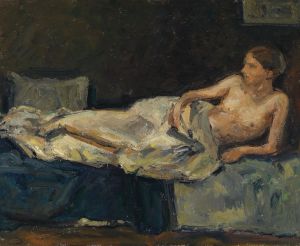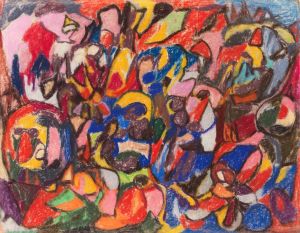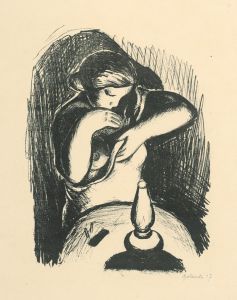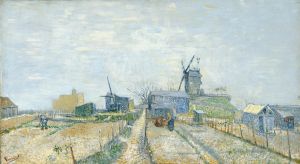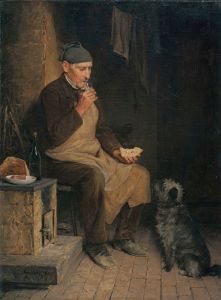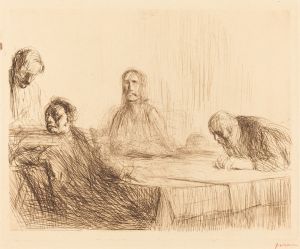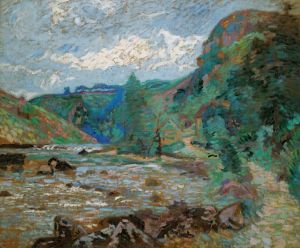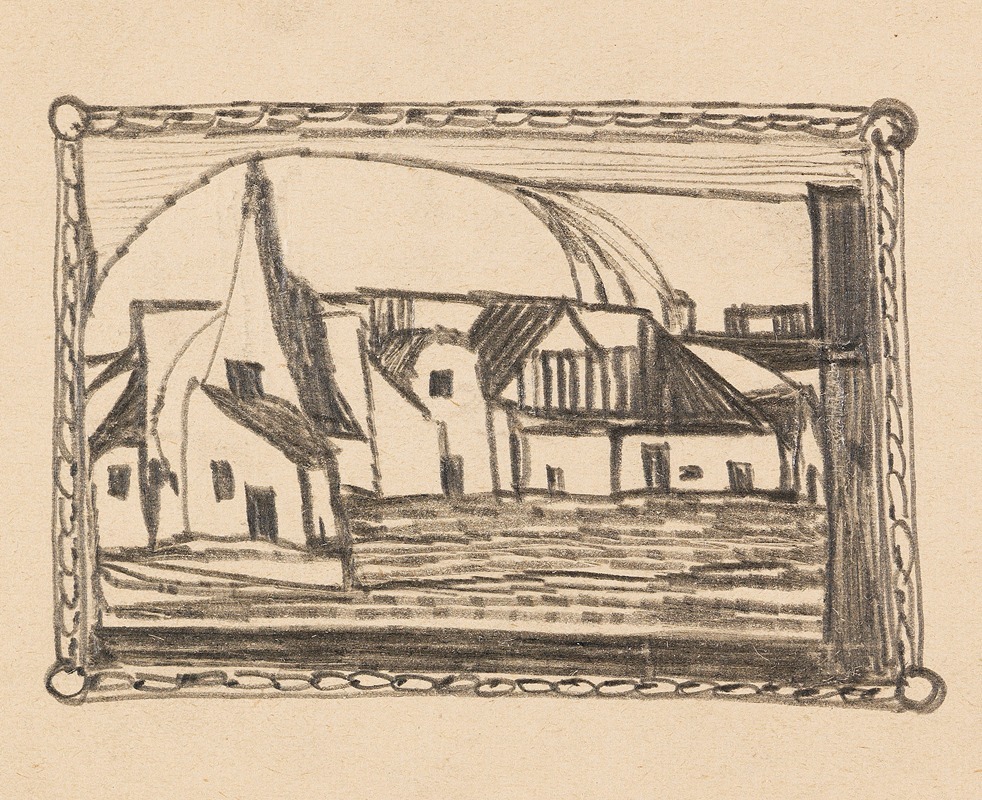
Dorfansicht
A hand-painted replica of Adolf Hölzel’s masterpiece Dorfansicht, meticulously crafted by professional artists to capture the true essence of the original. Each piece is created with museum-quality canvas and rare mineral pigments, carefully painted by experienced artists with delicate brushstrokes and rich, layered colors to perfectly recreate the texture of the original artwork. Unlike machine-printed reproductions, this hand-painted version brings the painting to life, infused with the artist’s emotions and skill in every stroke. Whether for personal collection or home decoration, it instantly elevates the artistic atmosphere of any space.
Adolf Hölzel was a significant figure in the development of modern art, particularly known for his contributions to the transition from Impressionism to abstract art. Born in 1853 in Olomouc, Moravia, Hölzel became a pivotal figure in the German art scene during the late 19th and early 20th centuries. He was a painter, theoretician, and teacher whose influence extended to many notable artists of the time.
"Dorfansicht" is one of Hölzel's works that exemplifies his unique approach to painting. Although specific details about the painting "Dorfansicht" are limited, it is understood to be part of his exploration of color and form, which were central themes in his oeuvre. Hölzel's work often focused on the simplification of forms and the use of color to convey emotion and structure, rather than relying on representational accuracy.
Hölzel's artistic journey began with his studies at the Academy of Fine Arts in Vienna and later at the Academy of Fine Arts in Munich. His early works were influenced by Impressionism, but he gradually moved towards a more abstract style. In 1888, he co-founded the "Neu-Dachau" artists' colony, which became a hub for artists seeking new forms of expression beyond the traditional academic styles.
In 1905, Hölzel was appointed as a professor at the State Academy of Fine Arts in Stuttgart, where he became a highly influential teacher. His pedagogical approach emphasized the importance of color theory and composition, and he encouraged his students to explore abstraction. Among his students were several artists who would later become prominent figures in modern art, including Oskar Schlemmer, Willi Baumeister, and Johannes Itten.
Hölzel's theoretical writings and teachings were instrumental in the development of abstract art. He believed that art should transcend mere representation and instead focus on the spiritual and emotional resonance of color and form. This philosophy was reflected in his own work, including "Dorfansicht," where he employed a harmonious balance of colors and simplified forms to create a composition that was both aesthetically pleasing and intellectually stimulating.
Throughout his career, Hölzel participated in various exhibitions and was associated with several art movements, including the Berlin Secession and the Munich Secession. His work was well-regarded during his lifetime, and he continued to paint and teach until his death in 1934.
While specific information about "Dorfansicht" is scarce, it is clear that the painting is representative of Hölzel's broader artistic goals and achievements. His legacy is preserved not only through his own works but also through the impact he had on his students and the subsequent generations of artists who were inspired by his innovative approach to art.





